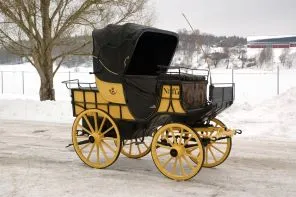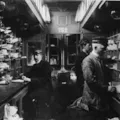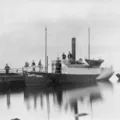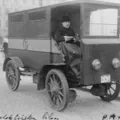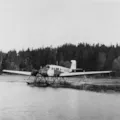Post farmers and mail carriers
Christian IV’s “Forordning om Post-Budde” (Mail Carrier Decree) was enacted in December 1624. Nine Danish postal routes were established, of which the route to Hamburg was the most important. Twelve years later the Swedish council of state approved the ”Förordning om Postbådhen” (Mail Carrier Ordinance). This was the beginning of formal postal services in both countries.
In Sweden, a system of post farmers was established. The designated farmers were located 20 to 30 kilometres from one another along the postal routes. Farmhands were required to be prepared to “carry mail items by night and day”, at a rate not exceeding two hours per 10 kilometres. The rate was changed in 1682 to a maximum of one hour and 15 minutes per 10 kilometres if road conditions were good. From 1694 Danish mail carriers were allowed a maximum of 45 minutes per 10 kilometres, but they had horses to ride.
Rural postmen into the 20th century
Well into the 20th century, mail carriers and rural postmen on local routes transported the post on foot. But post was transported by coach between Copenhagen and Hamburg beginning in 1624, and a 1646 Swedish ordinance stipulated that horses must always be provided on the Stockholm – Halmstad route. Before postal service in Sweden took shape, the governor of the Stockholm – Markaryd route was required to make two post horses available for each 30 kilometres. Letters, parcels and even passengers could be transported with horse and carriage, though this took more time than the mounted postmen carrying only letters.
First mail coach year 1800
Around the year 1800, the Danish postal service purchased its first mail coach. Sweden’s less successful attempt with mail coach service was well underway by 1831. These mail coaches also carried passengers and continued to operate in Denmark into the 20th century. The horse-drawn mail coach disappeared from Sweden in 1888.
In 1894, Danish rural postmen were granted permission to use bicycles. Bicycles were also used in Sweden during the late 1800s, though without formal permission to do so in most cases. Records from around 1910 show that some routes were serviced with velocipedes (bicycles) during the summer.
Today, 60-70 per cent of letters in Denmark are delivered by cycling mail carriers. This means that Danish mail carriers cycle a total of 15 million kilometres per year.
